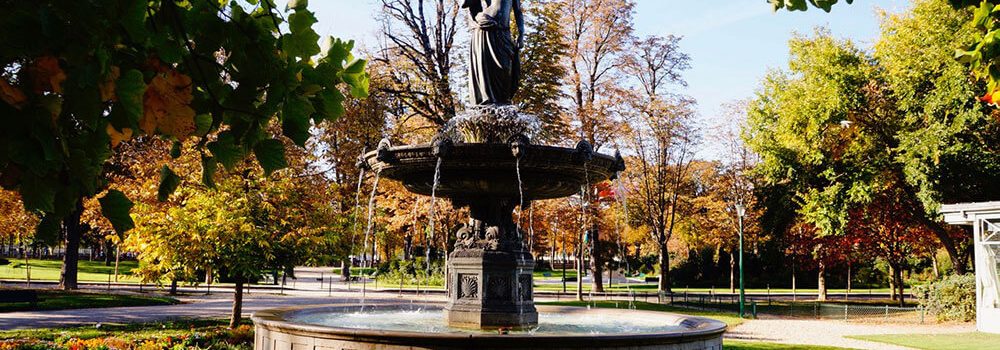In the world of design and architecture, each structure carries its own unique story and purpose. Water fountains, evolving from purely functional elements to ornamental pieces of great beauty, are iconic examples of this evolution. This article offers a detailed look at the history of fountains, unraveling their development over the ages and highlighting their influence on contemporary ornamental fountain design.
Primitive Fountains: Functional Foundations
At the dawn of civilization, water fountains were crucial for basic supply. Our ancestors relied on natural sources, establishing their communities near watercourses to meet essential needs for drinking water and animal care. For contemporary design professionals, understanding how fountains originated as responses to fundamental needs is essential for creating designs that respect this functional heritage.
Innovation in Community Development: The Era of Artificial Fountains
Technological advancements allowed the emergence of artificial fountains that distributed water to previously inaccessible locations. These technical innovations revolutionized urban planning and architecture, as fountains began to be landmarks in emerging communities. For modern architects and engineers, the evolution of artificial fountains represents the importance of finding creative solutions to meet the changing needs of urban populations.
From Functionality to Aesthetics: The Rise of Ornamental Fountains
Over time, fountains moved beyond their exclusive functionality to embrace aesthetics. The Renaissance and Baroque periods marked an era of splendor, in which fountains became true works of art with exquisite sculptural and architectural details. For design professionals, these periods are sources of inspiration for creating ornamental fountains that merge history and modernity.
Ornamental Fountains Today: Integration and Technology
Today, ornamental fountains continue to evolve as technology integrates with design. Modern fountains can combine advanced lighting systems, water effects synchronized with music, and remote control, creating unforgettable visual and auditory experiences. Contemporary architects, engineers, and designers find inspiration in this integration of technology and aesthetics, encouraging the creation of fountains that captivate the senses.
Inspiration from History, Modern Creation
Ultimately, the history of water fountains is an inexhaustible source of inspiration for design professionals. From the primal necessity of supply to the pursuit of beauty and innovation, this evolution represents the spirit of human creativity. For those involved in creating ornamental fountains today, this history illuminates the path to generating designs that merge rich historical heritage with present needs and technologies.
-
What is the difference between a functional water fountain and an ornamental fountain?
A functional fountain is designed primarily to provide drinking water or supply in communities, while an ornamental fountain focuses on aesthetics and seeks to beautify urban or private spaces, incorporating artistic elements and advanced design techniques.
-
What factors should be considered when designing an ornamental fountain?
When designing an ornamental fountain, it is crucial to consider the location, architectural environment, water flow, sculptural elements, and integration of technology. These elements combine to create a unique visual and auditory experience.
-
What is the environmental impact of modern ornamental fountains?
Modern ornamental fountains are designed with a focus on sustainability. Many use water recirculation systems and energy-saving technologies to minimize resource consumption and reduce environmental impact.
-
How can water and music effects be synchronized in a fountain?
The synchronization of water and music effects in a fountain is possible through advanced control systems. These systems allow for the programming and coordination of water movement with music, creating an impressive visual and auditory spectacle.
-
What challenges may arise when building ornamental fountains in urban environments?
In urban environments, planning and coordination are essential. Challenges such as underground infrastructure, space restrictions, and compliance with regulations can influence the design and construction of ornamental fountains.
-
How can an ornamental fountain be maintained in optimal conditions?
Regular maintenance is key to preserving the beauty and functionality of an ornamental fountain. This includes cleaning filtration systems, checking pumps, and inspecting sculptural elements to ensure their good condition. -
What advantages does LED lighting offer in water fountains?
LED lighting offers versatility in fountain design, allowing for the creation of captivating visual effects and dynamic color changes. Additionally, reduced energy consumption and extended lifespan make this technology an attractive option.
-
What role do ornamental fountains play in urban planning?
Ornamental fountains play a fundamental role in urban planning by enhancing the aesthetics of public spaces, reducing ambient temperature through evaporation, and providing meeting and contemplation places for the community.
-
How can ornamental fountains be customized to meet client needs?
Ornamental fountains can be highly customized to reflect the client’s vision. This can include incorporating unique design elements, custom sculptures, or the integration of cultural and thematic symbols.
-
What are some iconic examples of ornamental fountains in existence today?
Iconic examples include the Magic Fountain of Montjuïc in Barcelona, the Dubai Fountain at Burj Khalifa Lake, and the Bellagio Fountain in Las Vegas. These fountains represent the culmination of creativity and technology in ornamental fountain design.”






